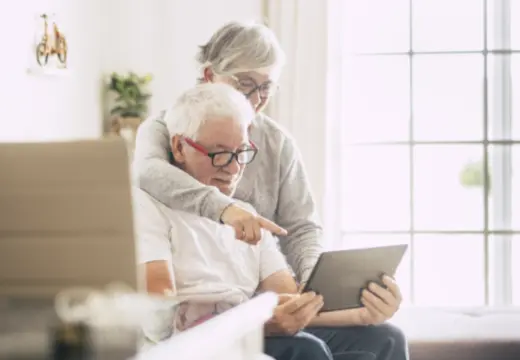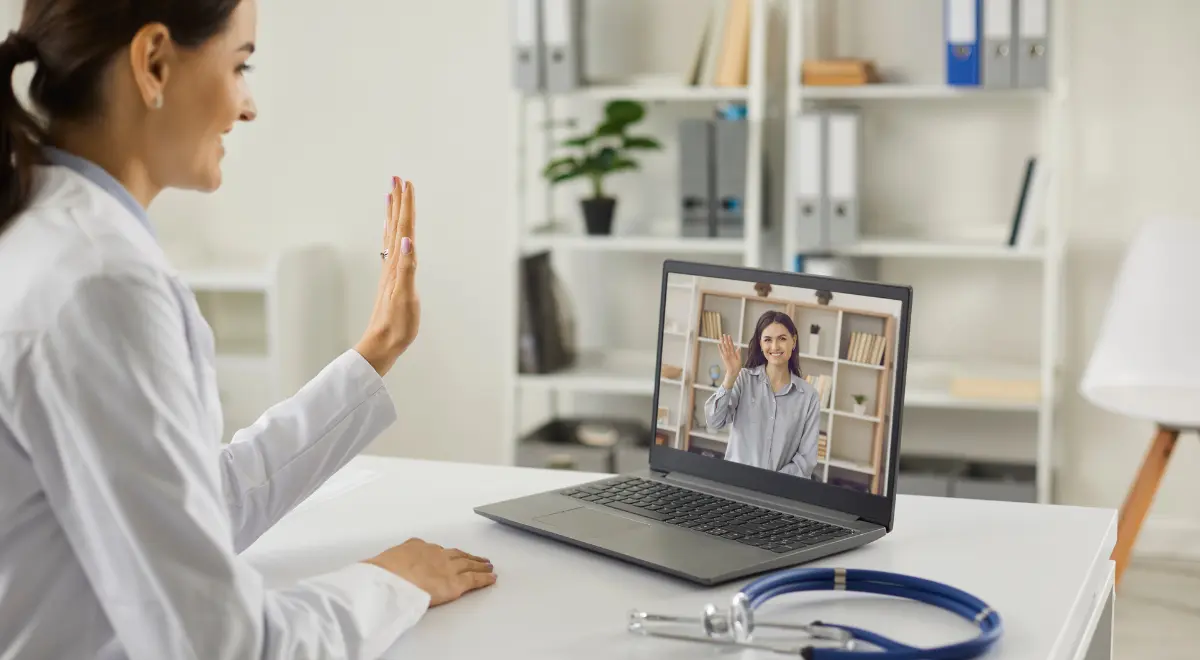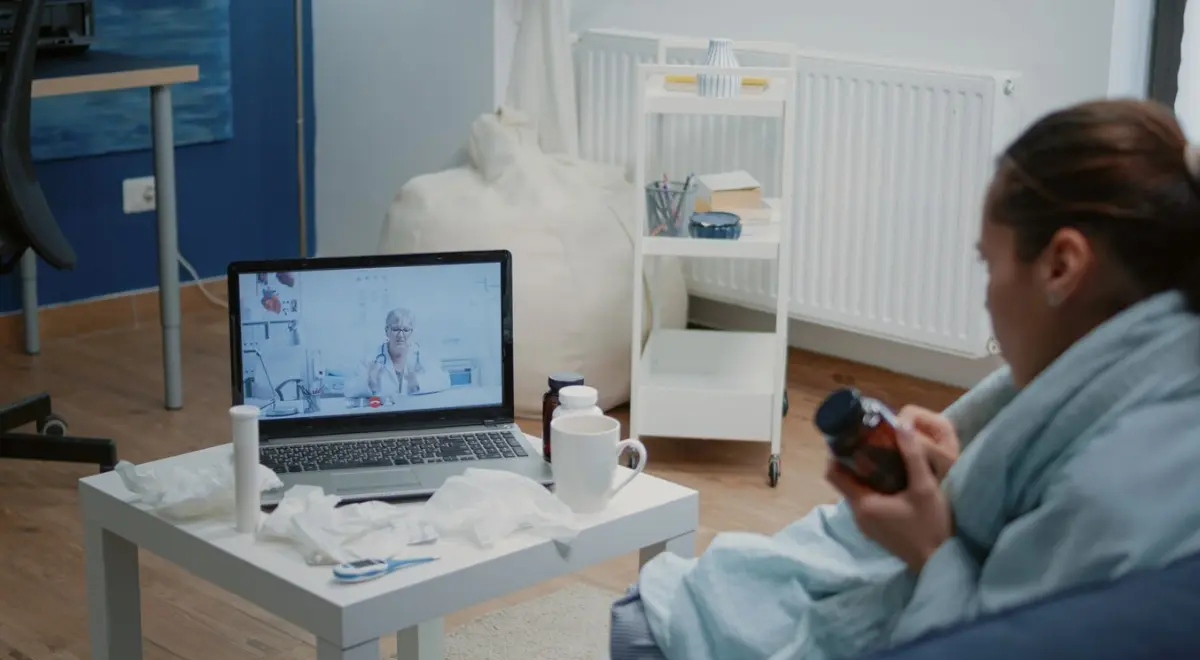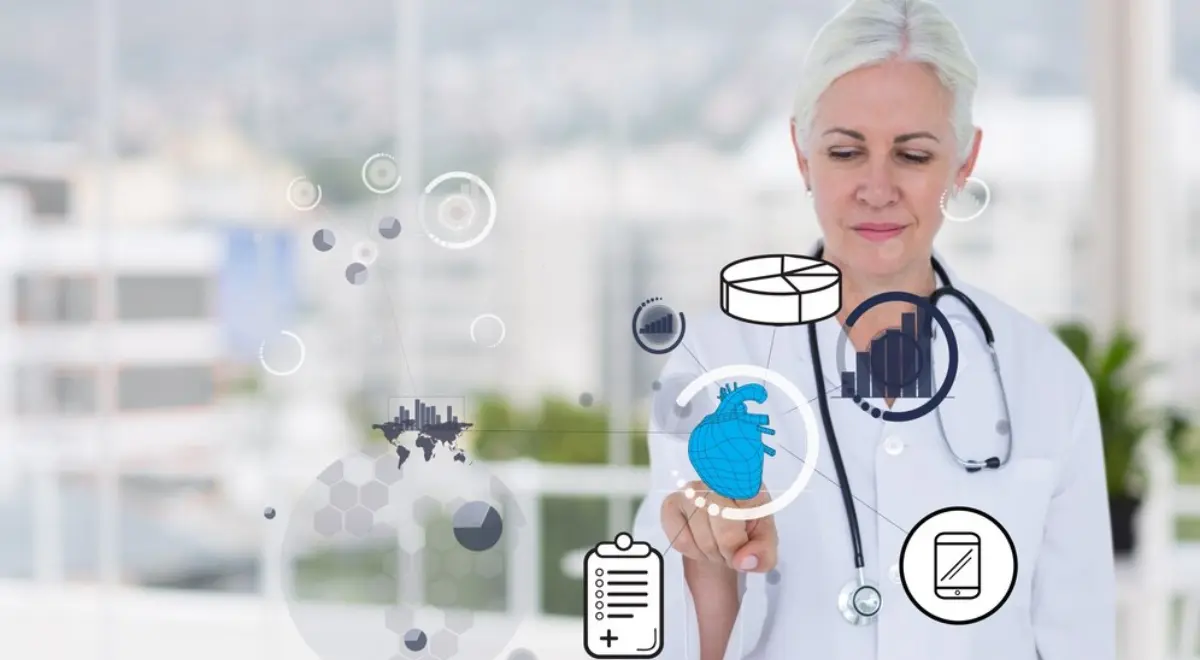What is Remote Therapeutic Monitoring and Benefits in 2023

Remote Therapeutic Monitoring, or RTM, involves remote delivery of therapeutic patient care pertaining to musculoskeletal and respiratory systems as well as medication adherence and cognitive behavioral therapy (CBT). RTM is distinct from remote patient monitoring (RPM) and even complements and supports it. It is intended to manage patients who use medical device or software that collect non-physiological data. The new RTM codes allow for the collection of data regarding indicators such as therapy/medication adherence, therapy/medication response, and pain level. Specifically, under these codes, CMS recognizes that “therapeutic” data—other than just “physiological” information—is also a significant source of remote evaluation of patient data.
RTM codes allow reimbursement for remote management and collection of data not related to a patient’s physiological condition. Comparatively, RPM reimburses only monitoring of physiological data. (That is why remote physiological monitoring is sometimes called RPM).
In a hypothetical situation, RTM might be used as follows:
During an asthma attack, the patient has been prescribed a rescue inhaler with an FDA-approved remote monitoring medical device that continually monitors when and how frequently the patient uses the inhaler, how many puffs or doses are used, and the pollen count and environmental factors present at the time of the attack. In this case, the data is not physiological. As a result, the treating professional can assess how well the asthmatic patient is responding to treatment and how well they are adhering to the treatment plan. The practitioner will be able to identify better how the patient is responding to the medication, what factors affect the patient’s respiratory system, and what changes can be made to improve the patient’s health as a whole.
Table of Contents
ToggleWhat are the differences between remote therapeutic monitoring (RTM) and remote patient monitoring (RPM)?
Despite similarities, CMS identified some key differences between RPM and RTM codes.
Scope of the Data Collection
In addition to monitoring musculoskeletal and respiratory conditions, adherence to therapy, and treatment response, RTM codes also provide non-physiological data.
Clinical Use Cases Qualified for RTM Reimbursement
There are no restrictions on the clinical or biological systems being monitored by RPM CPT Codes, although the data must be physiological. Contrary to this, RTM CPT Code 98976 is limited to transmissions of monitoring the respiratory system, whereas 98977 is limited to transmissions of monitoring the musculoskeletal system. As of today, RTM device supply codes are not available for other systems (e.g., neurological, vascular, endocrine, digestive, and other such disorders).
Methods of Collecting Data
Patients are able to self-report RTM data, which can be digitally uploaded via software-as-a-medical-devices (SaMD). An RPM device, in contrast, is required to record and upload patient’s physiological data automatically. The patient shouldn’t manually enter it.
Remote therapeutic monitoring: how can it benefit you?
The new RTM reimbursement codes have other benefits in addition to the obvious advantage of enabling at-home care. As they allow for more types of monitoring, for example, they open the door to get reimbursed for services other than physician-directed clinical care, which is the foundation for most of the existing RPM systems.
Additionally, because this rule allows data to be collected as part of “general medicine” as opposed to direct “evaluation and management,” practitioners who are not physicians may now bill for RTM services. In a sense, remote care is expanded beyond the immediate responsibility of physicians to include nurses, physical therapists, and occupational therapists.
In addition to enabling self-reporting, RTM allows patients to upload information to their devices manually. In contrast, RPM requires that medical devices upload data automatically – a requirement that could exclude certain devices from being reimbursed.
Consequently, the expanded use of this technology enables closer monitoring of adherence to the prescribed therapy. Practitioners can use this method to determine whether patients are following their care regimens and how well they’re doing. Thus, they are able to understand potential patient adherence problems better and then make the appropriate adjustments for better care.
In addition to improving medication adherence as well as respiratory and musculoskeletal status, more effective monitoring can reduce the number of re-hospitalizations, urgent care visits, and emergency room visits. In turn, this could offer providers the opportunity to lower costs, improve outcomes, and better adhere to the guidelines of value-based care.
Which CPT codes are associated with the RTM?
The CPT Editorial Panel created a family of five codes in October 2020 named RTM. Three codes in the RTM family are practice expense (PE)-only codes and two codes that are professional work-only codes.
So, with that background in mind, here is a breakdown of all the new RTM codes, followed by the CMS definitions, a simple explanation, and the amount of reimbursement:
CPT Code 98975
Remote therapeutic monitoring (e.g., respiratory system status, musculoskeletal system status, therapy adherence, therapy response); initial setup and patient education on the use of equipment.
What does that mean?
This RTM code describes the initial setup of a therapeutic monitoring device or other equipment, as well as the education of the patient regarding its use. Only one episode of care can be billed per year (the period from the activation of the service to the resolution of the treatment objective).
How much is the amount of reimbursement?
According to 98975, the facility may receive a one-time reimbursement of $19.65 (national average for non-facilities).
CPT code 98976 (Respiratory)
Remote therapeutic monitoring (e.g., respiratory system status, musculoskeletal system status, therapy adherence, therapy response); device(s) supply with scheduled (e.g., daily) recording(s) and/or programmed alert(s) transmission to monitor respiratory system, every 30 days and requires 16 unique days of data collection or measures on respiratory system status.
What does that mean?
The RTM code 98976 provides reimbursement for the provision of a remote device that monitors the respiratory system, which includes periodic recordings and/or scheduled transmissions of alerts. However, reimbursement is limited to one per month (30 days).
How much is the amount of reimbursement?
In accordance with 98976, each patient may receive a maximum reimbursement of $46.83 per month every 30 days (national average for non-facilities).
CPT Code 98977 (Musculoskeletal)
Remote therapeutic monitoring (e.g., respiratory system status, musculoskeletal system status, therapy adherence, therapy response); device(s) supply with scheduled (e.g., daily) recording(s) and/or programmed alert(s) transmission to monitor musculoskeletal system, every 30 days and requires 16 unique days of self-reported data on musculoskeletal system status which can be self-reported.
What does that mean?
In accordance with RTM Code 98977, reimbursement can be applied to the purchase and delivery of a remote device for monitoring the musculoskeletal system, including scheduled recording and/or programmed alert transmission. There is a limit of one billing per calendar month (30 days).
How much is the amount of reimbursement?
For coverage under 98977, a total reimbursement of $48.63 may be awarded each month per person (national average for non-facilities).
CPT Code 98980
Remote therapeutic monitoring treatment management services, physician/ other qualified health care professional time in a calendar month requiring at least one interactive communication with the patient/caregiver during the calendar month; first 20 minutes.
What does that mean?
Therapeutic monitoring and/or management is a reimbursable service under RTM Code 98980. A 20-minute consultation is covered within one calendar month, with at least one “interactive communication” (such as a video conversation or telephone call).
How much is the amount of reimbursement?
Per person per month, the reimbursement amount for 99880 is $49.78 for 20 minutes of initial consulting (national average for non-facilities) that can be billed once every 30 days.
CPT Code 98981
Remote therapeutic monitoring treatment management services, physician/other qualified health care professional time in a calendar month requiring at least one interactive communication with the patient/caregiver during the calendar month; each additional 20 minutes.
What does that mean?
There is an RTM code 98981 that allows reimbursement for additional clinical time devoted to therapeutic care between a patient and their caregiver. The reimbursement allows reimbursement for up to 20 minutes of additional clinical time per calendar month, there must also be some form of interactive communication (like a telephone call or a video call).
How much is the amount of reimbursement?
For every 20 minutes of additional consultation time, 98981 allows for a total of $39.30 per person per month (national average for non-facilities).
FAQs
The purpose of this article is to answer some of the frequently asked questions, leaving you feeling more confident and assured.
Which practitioners can order and deliver RTM?
The services provided by a qualified healthcare professional can be billed as general medicine services by a physician. The RTM codes could be available for physical therapists (PT), occupational therapists (OT), speech-language pathologists, physician assistants, nurse practitioners, clinical social workers (CSWs), and physician assistants.
What is the required number of minutes for RTM?
In order to use the CPT code 98980, the patient must spend at least 20 minutes per month on remote therapy monitoring and management of treatment. During this time, the healthcare provider must also be available to communicate with the patient or caregiver on at least one occasion (e.g., by phone or video).
A CPT code 98981 must meet the same requirements as a CPT code 98980, with the exception that it should be used for an additional 20 minutes each month as an add-on code.
Is it possible to bill the RTM codes on a regular basis?
It is possible to bill code 98975 once per episode of care. It is important to note that an episode of care begins when the remote therapy monitoring service begins, and it ends when the targeted treatment goals are achieved.
You may be billed once every 30 days for codes 98976 and 98977.
No matter how many therapeutic monitoring modalities are performed in a given calendar month, code 98980 may be billed once per calendar month. For each additional 20 minutes performed in a calendar month, code 98981 may be billed.
Over how many days must the device collect data?
In order to qualify for CPT codes98976, and 98977, the RTM device must monitor a minimum of 16 days of data per 30-day period in total.
Is it possible for patients to self-report RTM data?
Absolutely. Self-reported/entered data may be considered non-physiologic data for RTM purposes. RTM data can be entered by the patient or uploaded electronically. Although the FDA’s definition of a medical device remains the requirement for RTM codes, self-reported RTM data from a smartphone app or online platform that qualifies as Software as a Medical Device (SaMD) may be eligible for reimbursement.
What Is the Difference Between HealthArc’s Approach and Others?
HealthArc enables healthcare providers to connect with patients remotely and enhance patient care with easy & efficient Remote Therapeutic Monitoring (RTM).
Compatible with all major EHRs and connected medical devices.
HealthArc integrates seamlessly with 55 of the most popular EHRs in the market. In addition to electronic health records, HealthArc is compatible with any device that supports external APIs, such as Bluetooth or cellular devices.
Multiple conditions are supported.
In addition to enhancing health standards, HealthArc will assist you in providing comprehensive treatment to your patients, with robust mechanisms to analyze respiratory status, musculoskeletal status, therapy adherence, and therapy response.
Supports clinical decision-making.
Through embedded clinical decision support, HealthArc combines data from connected devices with patient clinical data to deliver clinical insights and actions tailored to each patient. This results in instant alerts, timely interventions, effective health management, and reduction in hospitalization.
Secures personal data to the highest standards.
Our compliance team is dedicated to ensuring that our people, systems, and third-party service providers all adhere to a privacy-by-design approach. Our entire patient interaction module, including SMS and in-app messaging features, is HIPAA compliant.
Conclusion
Over the coming years, remote monitoring is expected to continue to grow as an area with significant upside potential. These new codes should be taken seriously by hospitals and healthcare providers who use remote patient monitoring, remote therapeutic monitoring, and other non-face-to-face technologies and should be aware of developments that can enhance patient experience and drive recurring revenue.
The interdisciplinary approach, the flexible interface, and the seamless interoperability of HealthArc have been market leaders in remote patient monitoring.
In the proposed CMS rules regarding Remote Therapeutic Monitoring, clinicians are encouraged to utilize remote monitoring technologies to enhance patient care. However, technical details need to be worked out. RPM & RTM opportunities will continue to be monitored by CMS for any rule changes or guidance that may affect or improve these opportunities.
Schedule a demo today to learn more about remote therapeutic monitoring CMS CPT codes.
Most recent blogs
Categories
- Behavioral Health Integration
- Cellular Remote Patient Monitoring
- Chronic Care Management
- Chronic Care Management Billing
- Chronic Care Management CPT Codes
- Chronic Care Management Program
- Chronic Care Management Software
- Digital Health Platform
- Principal Care Management
- Principal Care Management CPT Codes
- Remote Monitoring Devices
- Remote Patient Care
- Remote Patient Monitoring
- Remote Patient Monitoring Billing
- Remote Patient Monitoring CPT Codes
- Remote Patient Monitoring Devices
- Remote Patient Software
- Remote Therapeutic Monitoring
- Remote Therapeutic Monitoring Billing
- Remote Therapeutic Monitoring CPT Codes
- Telemedicine & RPM
- Transitional Care Management
- Transitional Care Management Billing
- Transitional Care Management CPT Codes
Related Posts
- July 23, 2024 | Read Time: 8 mins
HealthArc Vs. Prevounce: Which One To Choose?
- June 27, 2024 | Read Time: 4 mins
Remote Therapeutic Monitoring (RTM) For Musculoskeletal Care
- June 21, 2024 | Read Time: 5 mins






